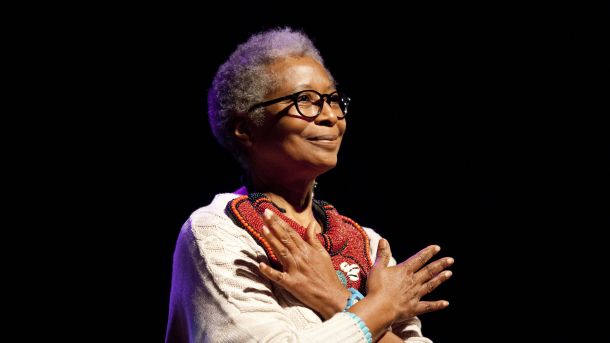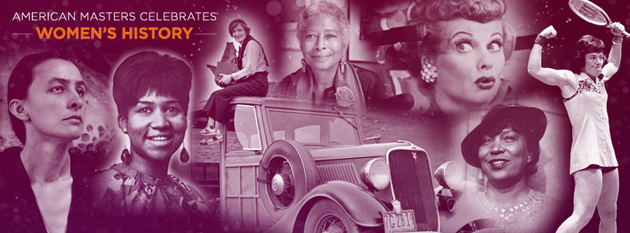
In honor of Women’s History Month, American Masters revisits women in its documentary archive.
Trailblazers in Male-dominated Fields
These women rose to the top in entertainment, the business of television and the fine arts.
Judy Garland

Judy Garland at Chicago\’s Arie Crown Theatre, Nov. 1962. Courtesy of “The John Fricke Collection.\” Digital image restoration by Ranse Ransone.
Judy Garland (1922 – 1969) amassed a body of work astounding in its range, amazing in its power, and timeless in its ability to exult, enthrall, and excite cross-generational audiences. In each medium, her legacy encompassed unsurpassed artistic and popular successes. Garland is known as “the hardest working woman in Hollywood” for making 34 films in 28 years. Her singing was hear in film and on television and the radio and it’s estimated that she gave 3,000 concerts. In 1962, her album Judy Garland at Carnegie Hall won two Grammy Awards.
The national encore broadcast of the Emmy Award-winning film Judy Garland: By Myself takes place Friday, March 20, 2015, 9-11 pm (ET) on PBS (check local listings).
Lucille Ball
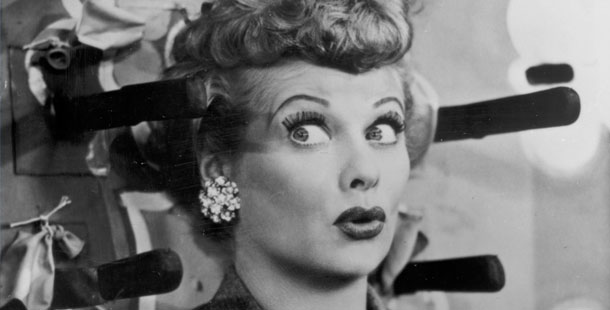
The landmark television sitcom I Love Lucy was named for its star comedian, Lucille Ball. But Ball was not only the talent, she was the producer. In 1950 Ball had co-founded the Desilu Productions studio with her husband Desi Arnaz. Their innovations included being the first scripted television program to be shot on film and in front of a studio audience. After their divorce, Ball became president of the company in 1962, making her the first woman head of a major Hollywood studio. Her successes were not dependent on her own charisma, but her acquisitions. She brought other groundbreaking and immensely popular shows to television, including Mission Impossible and Star Trek. Beyond her own immense talent, Ball’s legacy can be found in her understanding of the potential of television in its early days and giving the medium great direction.
Career Timeline of Lucille Ball (1911 – 1989)
Aretha Franklin
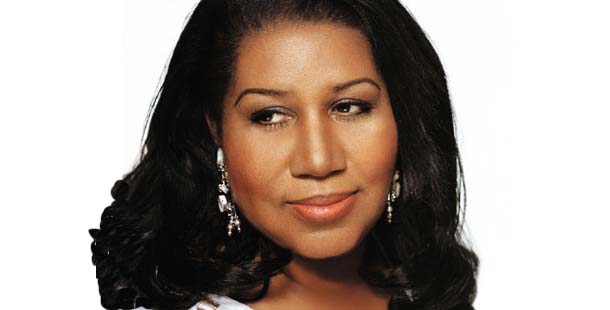
In 1987, Aretha Franklin, the Queen of Soul, became the first woman to be inducted into the Rock and Roll Hall of Fame. From her teenage days singing gospel in her father’s church to her ascendancy to rock and roll royalty, Franklin (b. 1942) has expressed a passion and intensity that has never failed to move her listeners.
Franklin has won 18 Grammy Awards and at over 75 million records sold, is one of the best-selling female artists of all time. She was honored with the Presidential Medal of Freedom on November 9, 2005.
Georgia O’Keeffe
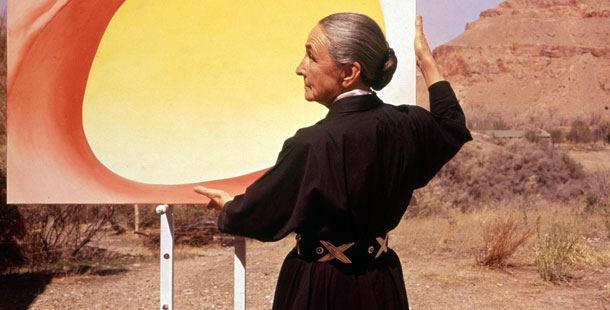
Even the early charcoal drawings of celebrated artist Georgia O’Keeffe (1887 –1986) — best known for her rich palettes for flowers and desert scenes — had an allure and were the occasion of her first exhibition in New York City in 1916. Her future husband, the photographer Alfred Steiglitz, showed them at his 291 Gallery.
It goes without saying that at a time when the U.S. government denied women the right to vote (that came in 1920), the male-dominated art world wasn’t very open to female artists either. Though hailed for her “female iconography,” O’Keeffe didn’t identify with feminism. In an interview she said, “The men liked to put me down as the best woman painter. I think I’m one of the best painters.”
In 1924 O’Keefee painted her first large-scale flower, “Petunia, No. 2,” and by the mid-1920s was known as one of the most important American artists. Though the sale ultimately did not go through, six of her calla lily paintings were sold for $25,000, which at the time was the largest sum ever paid for a group of paintings by a living American artist.
In 1962, O’Keeffe was elected to the 50-member American Academy of Arts and Letters. On January 10, 1977, President Gerald R. Ford presented O’Keeffe with the Presidential Medal of Freedom and in 1985, she was awarded the National Medal of Arts. In 1997, the Georgia O’Keeffe Museum in Santa Fe, New Mexico, became the first museum in the United States dedicated to a single female artist.
Photographers: Female Views
These two female photographers grabbed America’s attention and had it look at itself and women, the way they saw them.
Dorothea Lange
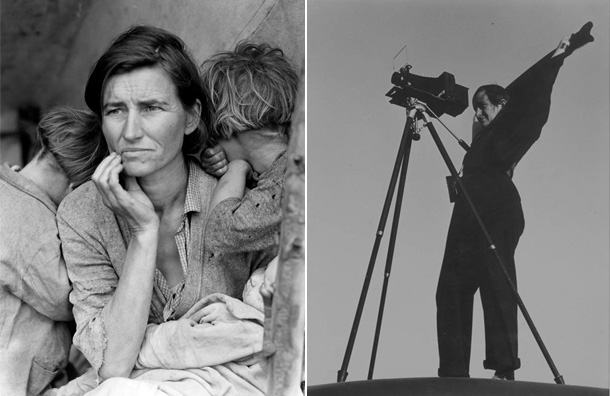
At left: Lange’s 1936 portrait, Migrant Mother, of Florence Owens Thompson. At right, Dorothea Lange in 1936, photographed by Rondal Partridge.
More than four decades of 20th-century America are reflected through the eyes of photographer and photojournalist Dorothea Lange (1895 – 1965). Known for her powerful images from the Great Depression, Lange’s haunting “Migrant Mother” (above) remains emblematic of that period. National awareness of that public crisis began in 1936, when Lange’s photographs of a poverty-stricken mother of seven, stranded in a pea-picker’s camp in Nipomo, California, were published.
In 1941 Lange was awarded a Guggenheim Fellowship, but she gave up the award in order to document the internment of Japanese Americans after the U.S. entered World War II. Her photos, taken on assignment by the agency leading the internment, the War Relocation Authority (WRA), were impounded by the U.S. Army.
As America emerged into a world power, Lange bore witness to mass migration, increasing urbanization and the cost of war at home, bringing subjects alive, transmitting raw emotions and capturing the human condition. Watch Dorothea Lange: Grab a Hunk of Lightning online. It is directed by Lange’s granddaughter, a seasoned filmmaker who began her artistic awareness and vision at, literally, Lange’s feet.
Annie Leibovitz
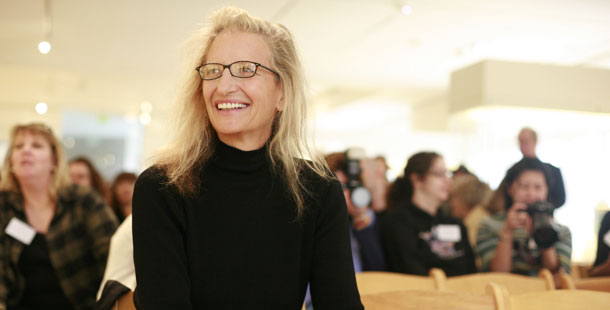
Photographer Annie Liebovitz (b. 1949) got her first assignment in 1970: Jan Wenner of Rolling Stone Magazine hired her to take a portrait of John Lennon. Her shot made the cover of the January 21, 1971 issue and two years later she was named the magazine’s chief photographer.
Ten years later in 1980, Rolling Stone sent Leibovitz to photograph Lennon and Yoko Ono. Liebovitz’s portrait shows a naked Lennon curled around his clothed wife. Several hours after the photo session, Lennon was shot dead outside his apartment. The photograph was the cover of the Rolling Stone Lennon commemorative issue and in 2005, the American Society of Magazine Editors named it the best magazine cover from the past 40 years.
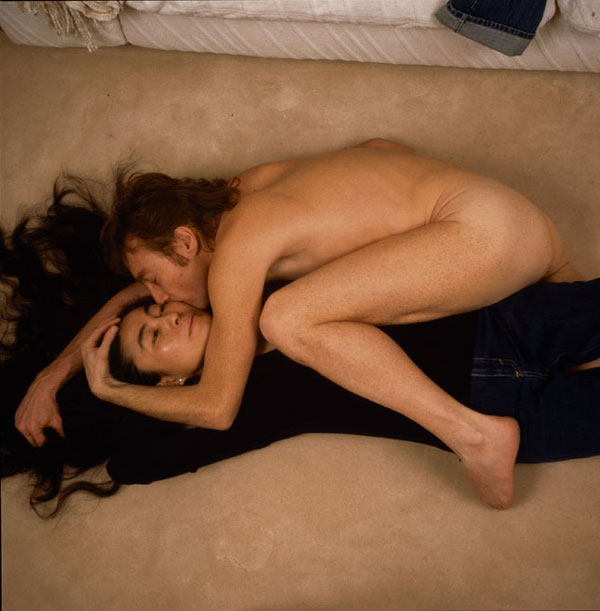
John Lennon and Yoko Ono. Photo by Annie Liebovitz.
Vanity Fair hired Liebovitz as its first contributing photographer in 1983. At that magazine she became known for her wildly lit, staged, and provocative portraits of celebrities. Most famous among them are Whoopi Goldberg submerged in a bath of milk and a naked, pregnant Demi Moore. The magazine cover showing Moore was named second best cover from the past 40 years by the American Society of Magazine Editors.
Liebovitz has been designated a living legend by the Library of Congress. Her first museum exhibition, Photographs: Annie Leibovitz 1970-1990, took place in 1991 at the National Portrait Gallery in Washington, D.C., and toured internationally for six years. She was only the second living portraitist — and the only woman — to be featured by the Smithsonian institution at that time.
Mothers Who Fight for What’s Right and Win
Lois Gibbs
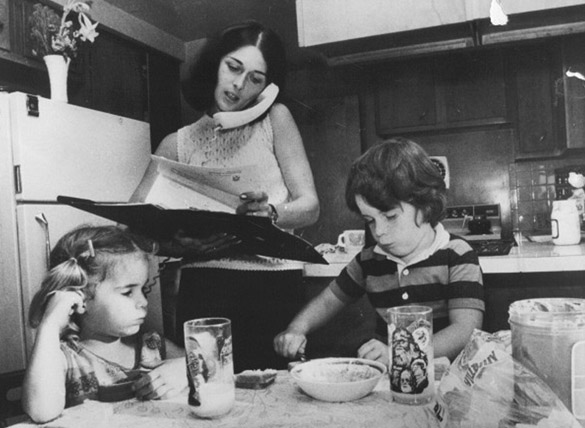
In 1978 Lois Gibbs organized fellow Love Canal residents in Niagara, NY, to fight the government and save their children from the 20,000 tons of toxic waste their school and homes were built upon. Learn more in American Masters: A Fierce Green Fire, airing on Earth Day, April 22, 2014.
In 1978 Lois Gibbs, a mother with no prior community organizing experience, galvanized her fellow Love Canal residents in Niagara, NY, to fight the government and save their children from the 20,000 tons of toxic waste their school and homes were built upon. Today Gibbs is executive director the Center for Health, Environment and Justice (CHEJ), a grassroots organization.
Overcoming Adversity with Strength and Grace
Tanaquil LeClercq

Edward Bigalow and Tanaquil Le Clercq. Photo courtesy of Augusta Films
Though her long, angular body did not conform to the ballerina ideal of her time, Tanaquil Le Clercq’s strength and musicality allowed her to stand out as a soloist adored by the most celebrated American choreographers of the 20th century — George Balanchine and Jerome Robbins. Le Clercq’s physical form and its abilities changed the look of ballet and ballerinas for generations to come. A soloist with the New York City Ballet, Le Clercq (1929 – 2000) suffered the cruelest blow to her talent while at the height of her career: she became paralyzed from polio at the age of 27.
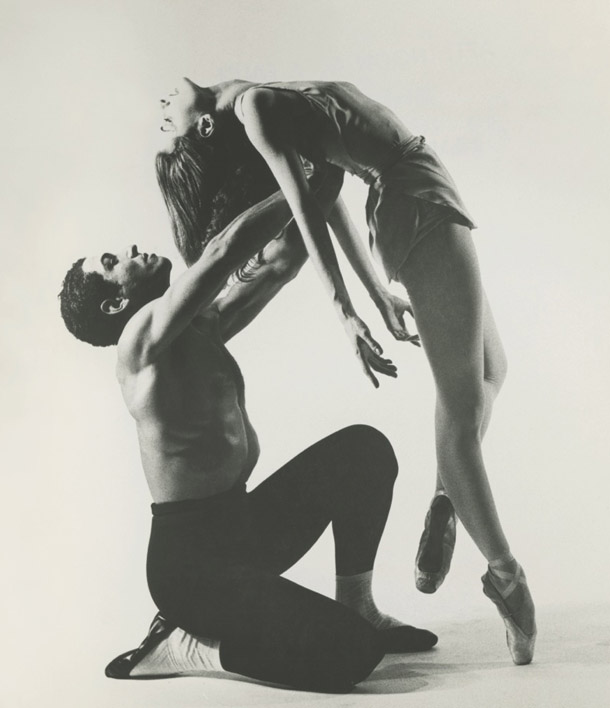
Tanaquil Le Clercq in Afternoon of a Faun, choreographed for New York City Ballet in 1953 by Jerome Robbins.
She retained much of the use of her upper body and arms, and rather than retreating from dance, Le Clercq forged on from her wheelchair. She taught, using her voice and elegant hands as guidance, at Ballet Theater of Harlem, founded by Arthur Mitchell, her former ballet partner at New York City Ballet. There, she trained future ballet star Virginia Johnson, today artistic director of Dance Theatre of Harlem.
Watch the beloved ballet dancer in Tanaquil Le Clercq: Afternoon of a Faun, available online.
Writers Who Exalt Unheard Voices
Novelist, poet and activist Alice Walker brought the voice of Southern, rural black women to the pages read by all of America, and she also kept the writing of another American Master and writer, Zora Neale Hurston, from slipping into obscurity.
Zora Neale Hurston
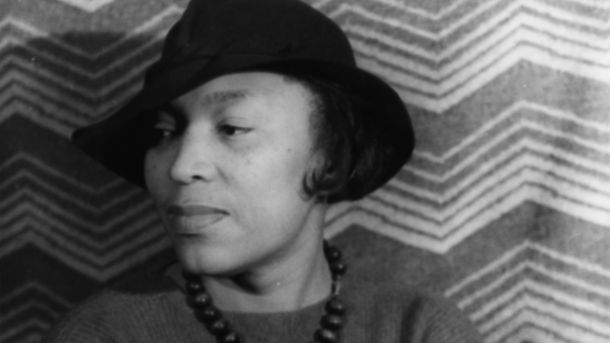 Zora Neale Hurston’s embrace of Southern black culture and language was an inspiration to writer Alice Walker. “I realized that unless I came out with everything I had supporting her, there was every chance that she would slip back into obscurity,” Walker says of the Hurston (1891-1960), a Harlem Renaissance writer and anthropologist.
Zora Neale Hurston’s embrace of Southern black culture and language was an inspiration to writer Alice Walker. “I realized that unless I came out with everything I had supporting her, there was every chance that she would slip back into obscurity,” Walker says of the Hurston (1891-1960), a Harlem Renaissance writer and anthropologist.
The novels of Zora Neale Hurston include Their Eyes Were Watching God (1937) and Moses, Man of the Mountain (1939). Beyond her own writing and work documenting Southern songs alongside folk music field collector Alan Lomax, Hurston was outspoken on the issues of lynching, segregation, and her feelings about white “liberals.” Read Hurston’s letter to Countee Cullen, her friend and fellow writer, written in 1943.
Alice Walker
Alice Walker (b. 1944) has been defined as one of the key international writers of the 20th century. Walker made history as the first African-American woman to win a Pulitzer Prize for Literature as well as the National Book Award in 1983 for her novel The Color Purple, one of the few literary books to capture the popular imagination. The award-winning novel served as the inspiration for Steven Spielberg’s 1985 film starring Whoopi Goldberg (Celie).An internationally celebrated author, poet and activist, Walker’s books include seven novels, four collections of short stories, four children’s books, and volumes of essays and poetry. Walker best-selling novel, Possessing the Secret of Joy (1992), was groundbreaking in detailing the devastating effects of female genital mutilation in Africa. Walker’s work has been translated into more than two-dozen languages, and her books have sold more than 15 million copies. Watch Alice Walker: Beauty in Truth online.
Forging Equality for Women
Billie Jean King
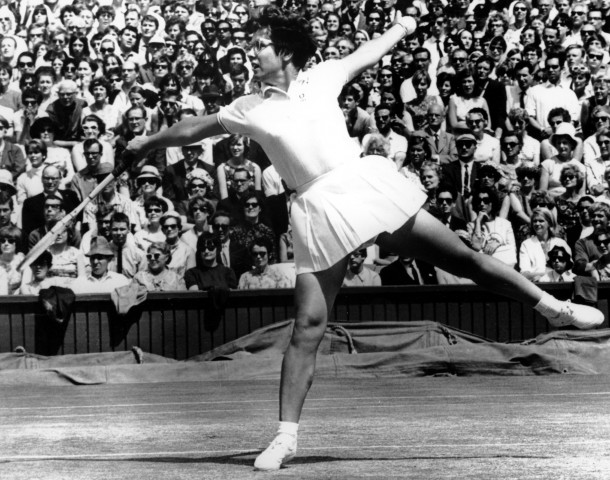 During her professional tennis career, Billie Jean King (b. 1943) won 39 Grand Slam titles, helped form the Virginia Slims Series (pre-cursor to WTA Tour), founded the Women’s Sports Foundation and Women’s Sports magazine, and co-founded World TeamTennis (WTT). Her competitiveness on the circuit was matched by her efforts on behalf of women and the LGBT community, and her commitment to prove there is strength in diversity.
During her professional tennis career, Billie Jean King (b. 1943) won 39 Grand Slam titles, helped form the Virginia Slims Series (pre-cursor to WTA Tour), founded the Women’s Sports Foundation and Women’s Sports magazine, and co-founded World TeamTennis (WTT). Her competitiveness on the circuit was matched by her efforts on behalf of women and the LGBT community, and her commitment to prove there is strength in diversity.
American Masters: Billie Jean King features interviews with a diverse cast of characters from King’s unparalleled life: former U.S. Secretary of State Hillary Clinton, friend and fellow activist Sir Elton John, feminist icon Gloria Steinem, Bobby Riggs’ son Larry and “Battle of the Sexes” trainer Lornie Kuhle, and Valerie Jarrett, Senior Adviser to President Obama, who chose King as the first female athlete to be awarded with the Presidential Medal of Freedom.

